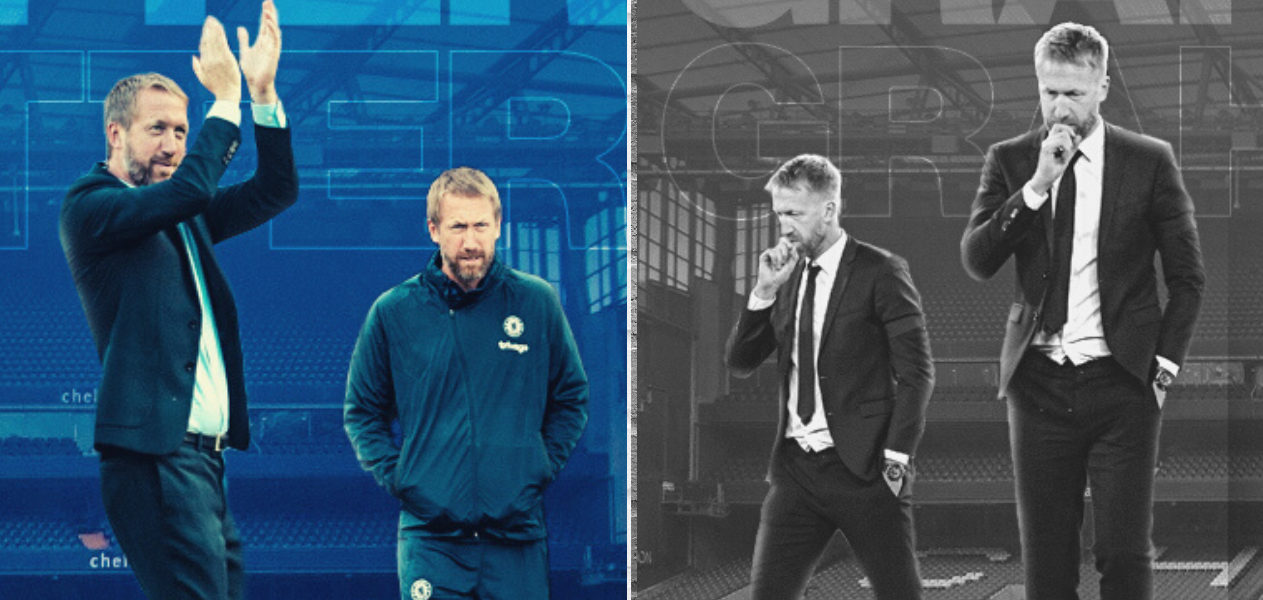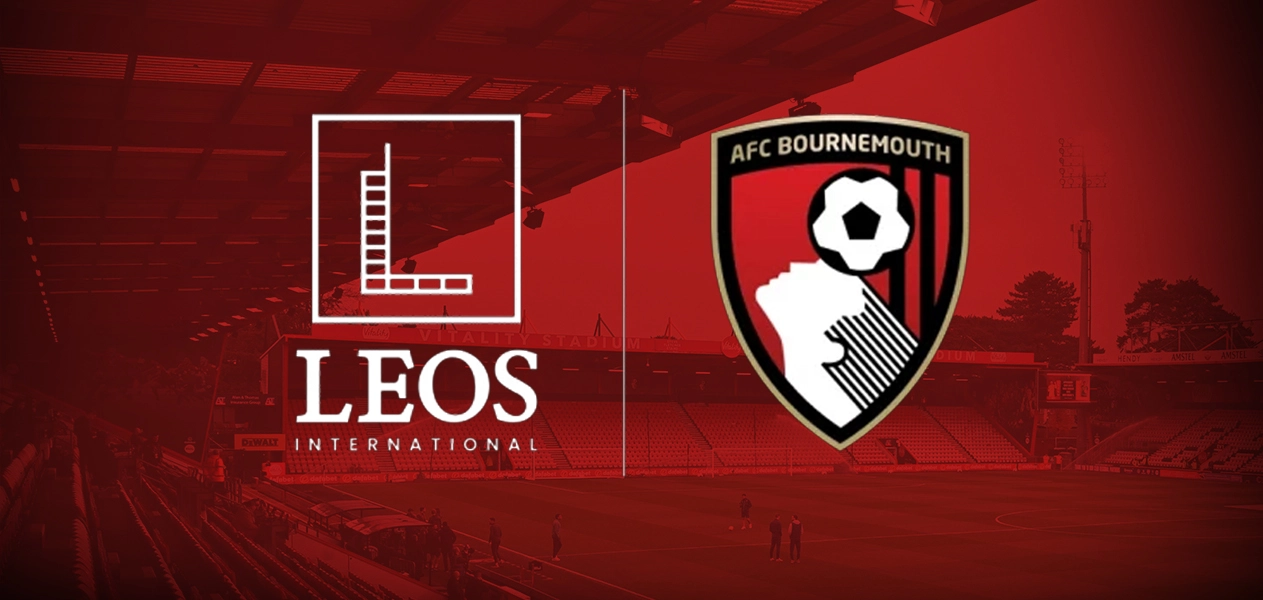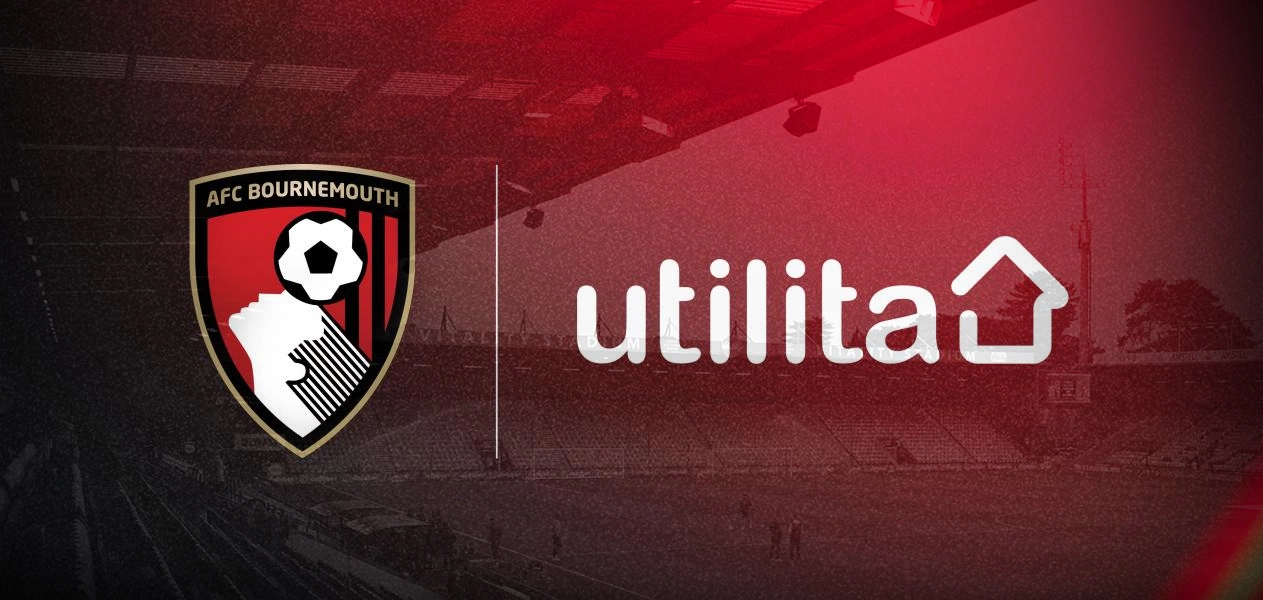A process warrants time only if logic and the evidence on display suggest that it will result in long-term success. That’s why the likes of Arsenal, Liverpool and Manchester City have stuck by their managers — because the trajectories of their respective projects have suggested success in the long run.
Graham Potter’s Chelsea, on the other hand, simply does not.
Therefore, it makes you wonder: after blowing nearly £600 million in a year and signing 17 players without a clear plan or identity, where do Todd Boehly and Graham Potter go from here?
Five months ago, I wrote a detailed piece explaining Graham Potter’s tactical approach as a manager during his three years with Brighton & Hove Albion, while giving a tactical analysis of his first game in charge with Chelsea.
On the surface, Potter was successful in taking care of some of the major flaws in Thomas Tuchel’s approach, giving a definite structure to Chelsea’s existing system.
In the field of play, there were three primary issues Tuchel had at Chelsea:
- It was the two wingbacks who were holding the width in the attacking third, whereas in elite teams at least one winger holds the width.
- Less pressure off the ball when pressing against a four-at-the-back team due to the distance the wingbacks had to cover.
- The front three lacked in quality.
Graham Potter, in his first game in charge of Chelsea, tried to solve these issues by:
- Fielding Raheem Sterling wide in the 3-4-3 on-the-ball shape.
- Setting up in a 4-4-2 out-of-possession shape to have more numbers high up the pitch to press.
- Progressing play into the final-third in a 4-2-4 (2-2-6) on-the-ball shape, thereby successfully switching Tuchel’s front three to a front four — resulting in less dependence on individual quality.
However, the truth of the matter is that Chelsea have played sub-standard football over some while now, and what’s damning is that there doesn’t seem to be a way out of this current situation.
Above all, the thing that’s baffling me the most about Potter’s Chelsea is the fact that he changes systems every other week. Sometimes the structure has been excellent, with individual lapses in concentration robbing them of a win, while other times he has consistently been getting it wrong over a sustained period.
Although his moments of brilliance on the tactical board have been encouraging enough for people like myself to suggest that he does have the quality to manage at the top, the fact that he changes systems all the time, coupled with the fact that he typically gets it wrong, makes Potter’s Chelsea easy to nullify.
Take a look at some of the elite managers in the Premier League — there’s a common thread to them. All of them sign very specific players for very specific roles because they have very specific systems. There’s nothing specific about Chelsea’s transfer strategy or Potter, for that matter.
Chelsea have signed some really special players on very long contracts, but for what system? There is none.
There’s a common theme in Potter’s systems: he consistently fields midfield-threes, whether that is in a 4-3-3 or in his 3-1-3-3, both of which are too fluid for his teams to have players in close proximity in the build-up, the final third, in defensive transitions, and to circulate/recycle possession.
All elite teams operate with two players in the middle of the park, typically, an inverted fullback or a conservatively-placed #8 alongside the #6. Potter’s Chelsea simply don’t do that, and this is where all of their problems stem from. Their structure epitomises disjointedness at every single level of play.
Even when out of possession, Chelsea don’t invert their wingers to press the opposition centre-backs. All successful teams invert their wingers to press the opposition centre-backs to stifle their build-up at the first line of attack, since giving away possession to highly technical teams nowadays results in a complete loss of control of the game without the ball.
Apart from Potter’s systems being horrible both in and out of possession, the profiles of players that he picks across the park also make very little sense.
Let’s take a look at some of the recent systems and structures employed by Graham Potter as Chelsea continue to fail and struggle to catch steam as we enter the business end of the season.
Recently, we saw Chelsea take on Tottenham Hotspur in a crucial top-four encounter. However, it was another overly fluid structure on display that resulted in another overly fluid performance. Since taking over at Chelsea, Graham Potter has been averaging four substitutions used per game and has been employing a new system every week.
Potter started the game with a 3-1-6 on-the-ball structure, which is too fluid given Ruben Lotus-Cheek often dropped alongside Enzo Fernandez, making it a 3-2-5 (hence their sustained attack initially), but the Argentine also dropped into the back-three as the game wore on, allowing Reece James to play as a traditional fullback, while the likes of Ben Chilwell, Raheem Sterling and João Félix could all interchange down the left flank with ease.
The general idea out of possession was to defend with five to mitigate Spurs’ overload in the last line. Their settled press was also quite good in patches as Chelsea tried to create man-to-man situations on the wings — something Mikel Arteta did to nullify Spurs across both his side’s league encounters against them.
This was definitely one of Potter’s better systems. However, even with all the superiorities and the general outlook of the 3-1-6 looking promising on paper, Spurs still countered them centrally, with their lone pivot Fernández shielding the back-line.
Many would wonder if Potter is that naïve to leave a 5v4 advantage in the build-up for Spurs throughout the entire 90 minutes, but the former Brighton manager had purposefully given them that advantage so that he could defend with five in the last line. The caveat here is that this only works if the front-four works industriously throughout the game.
But as the game progressed and the energy levels of the Chelsea front-line plunged, Spurs started gaining more control in key areas of the pitch — eventually leading to Pierre-Emile Højbjerg’s shot hitting the post. Tactically, it makes complete sense to press with a front-four against Spurs’ 3-2 build-up to create a defensive overload, where they are strong (in attack) and let them have the overload where they’re weak (in build-up).
The plan on paper made sense, but unfortunately, the game isn’t played on a piece of paper. Potter’s idea was to create a 6v5 overload against Spurs’ back-five, yet Loftus-Cheek or Dennis Zakaria operated alongside Enzo all game, meaning the right half-space was left unoccupied for large periods, and hence they were toothless down that side.
Chelsea’s lack of chance creation against a team like Tottenham, who don’t press in settled play and are often easy to keep the ball against and pin back, speaks volumes.
Let’s take a look at how Potter set his team up against Southampton last week. He employed another new system against relegation-threatened Southampton, and it was atrocious. The Englishman, being a possession-based manager, had his side manage just 37% possession against manager-less Saints in the opening 20 minutes. That points to structural flaws.
Chelsea set up in a 4-1-5 (4-3-3) on-the-ball structure, with Enzo Fernández as the lone pivot, the fullbacks wide, the wingers hugging the touchline, Félix in the right half-space and Mateo Kova?i? in the #8 role, as they transitioned to a 4-4-1-1 high-pressing structure off the ball.
On paper, it does sound more like Arsenal or Manchester City, who are flying high at the top end of the league table, but there are clear tactical differences that set their systems light years ahead of Potter’s at Chelsea.
In possession, none of the Chelsea fullbacks invert into the midfield or into defence to make it a back-three (3-2 build-up). The 4-1 build-up is simply poorly-spaced across the pitch, as the players operate over large distances in isolation. The 4-1-turned-3-2 build-up offers close proximity in the build-up — key to any possession-based side.
The consequences of such a disjointed shape resulted in Chelsea failing to create anything of note. They struggled to build-up play despite having some truly special and technically gifted players on the pitch. Imagine not being able to build up play against the bottom-placed side in the league with players like Kalidou Koulibaly, Ben Chilwell, Enzo Fernández, Mateo Kova?i?, Mason Mount, Raheem Sterling and Kai Havertz at your disposal. That’s a damning assessment of the manager’s horrible structure.
As a result, the same issues persisted in the offensive areas as well — the players had to operate in isolation. There was little room for combination plays as the players were so far apart. They were entirely reliant on individual quality.
Similarly, Southampton built-up play in a 4-2-4 and did so with great ease against Chelsea’s high-pressing 4-4-1-1, because the #10 would drop deep to mark the opposition #6 and there was a clear 2v1 against Wesley Fofana in the middle of the pitch.
There have been very few instances where Potter has been spot on with his tactical approach. One of those instances was against West Ham United.
Potter started the game with a 4-2-3-1 system on paper, a 3-2-5 build-up play, and a 4-4-2 off-the-ball shape. If Potter plays this system every week and builds on it, Chelsea would be special.
However, discipline is the most important cornerstone of such a demanding system, which requires players to press as a unit in cohesion throughout the full 90 minutes. Chelsea lost control of the game when their press became passive — partly due to fatigue, partly due to lack of cohesion among players.
West Ham’s goal came because of that. Chelsea allowed them time on the ball and an opportunity to sustain attacks with their passive press. And it’s no surprise that resulted in a goal as the Hammers created a 5v4 overload in the last line of attack with their wingbacks.
Despite the result, what completes this structure and affords basic balance in this 4-2-3-1 system is the inversion of the far side fullback when Chelsea are attacking down the ball-side flank. It means they attack in a 3-2-5 with optimal fluidity. With the double pivot, it brings everyone closer together in the build-up and for combinations whilst maintaining compactness in transition.
James occupies the width on the right, Noni Madueke comes inside to the half-space, creating a five-man wall in the last line of attack. Marc Cucurella on the far side inverts alongside Loftus-Cheek and Enzo Fernández, while sometimes James himself drifts into the half-space as Madueke moves out wide. The same can be said for the left wing.
That, right there, is optimal positional fluidity, because it’s within a rigid tactical base with top principles embedded in it. Each key zone is occupied, the players across the park are in close proximity and so can combine and interchange, and there is compactness in the first line of the counter-press and in midfield.
The 3-4-3/4-4-2 system is the way forward for Potter and Chelsea, and not the overly fluid 3-1-3-3. That doesn’t cut it from a structural perspective for any sort of team. Potter, however, as we’ve come to know, loves to change systems, and that will likely happen in the coming weeks to improve upon this. His biggest drawback, however, is also this knack of too much chopping-and-changing. This will more likely lead them to cup success in the short-to-medium term, but this approach will most likely see Chelsea underperform in the league big time.
The only way the project ends well is if Potter sticks to one of his better tactics and builds around it, because now Chelsea clearly have the quality to win games on merit. They have exceptional players for almost every single position.
However, Potter has never done that in his career. Quite literally — never. Although he may have done a good job at Brighton, he got away with implementing good tactical plans some of the time and bad tactical plans some of the time. Now, he is at Chelsea Football Club; this is elite-level football.
Moreover, any criticism of Chelsea attributed towards the players is wrong and unfair — Thiago Silva, Benoît Badiashile, Kalidou Koulibaly, Marc Cucurella, Reece James, Ben Chilwell, Enzo Fernández, Mason Mount, Mateo Kova?i?, João Félix, Raheem Sterling and Mykhailo Mudryk are all exceptional, not to mention the likes of Wesley Fofana, N’Golo Kanté and others. This should really be obvious by now.
Just take a look at Manchester United this season and last season. Both Bruno Fernandes and Marcus Rashford were berated, and seven months later they are back to being the best players in the league again. They didn’t change, but the environment did.
Similar can also be said about Liverpool now. All of sudden people think Mo Salah, Alisson Becker and Virgil van Dijk have turned into bad players overnight. Sorry, but that’s not how football works.
Liverpool as a collective have become less compact, and their environment is worse than it was ever before. Apply that to Chelsea now.
You have to respect Todd Boehly for sticking by Graham Potter so formidably, whether it’s the logical approach or not (and I don’t think so, based on the evidence at hand). However, some of this mess can also be put on him and his decision-makers, who have played a massive role in some of the random and hypocritical decisions made since they’ve been at the club. Looking at the root of the issue is always better for the fans.
However, given the talent pool at his disposal and the level of backing he has received from the Chelsea hierarchy thus far, Potter has been nowhere near good enough to be a Chelsea manager. If the general standard of play doesn’t improve by the end of the season, I don’t see how he will still be their manager come the start of the 2023/24 season.
I hope he proves me wrong and improves his process, but the strong likelihood is he won’t.






Leave a Reply